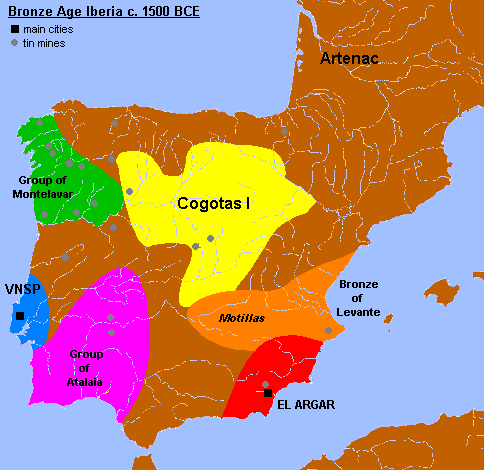Motillas on:
[Wikipedia]
[Google]
[Amazon]
 The ''motillas'' were the early settlements of
The ''motillas'' were the early settlements of
 The ''motillas'' were constructed in the period of BCE–1200 BCE. Their use started at the time of the
The ''motillas'' were constructed in the period of BCE–1200 BCE. Their use started at the time of the
Motilla del Azuer - A Bronze Age Wonder
2015 eyeonspain.com
F. Molina et al., ''Recent fieldwork at the Bronze Age fortified site of Motilla del Azuer (Daimiel, Spain)''. Antiquity Journal, 2006
 The ''motillas'' were the early settlements of
The ''motillas'' were the early settlements of La Mancha
La Mancha () is a natural and historical region located in the Spanish provinces of Albacete, Cuenca, Ciudad Real, and Toledo. La Mancha is an arid but fertile plateau (610 m or 2000 ft) that stretches from the mountains of Toledo to the ...
(Spain
, image_flag = Bandera de España.svg
, image_coat = Escudo de España (mazonado).svg
, national_motto = ''Plus ultra'' (Latin)(English: "Further Beyond")
, national_anthem = (English: "Royal March")
, i ...
) belonging to the Middle Bronze Age
The Bronze Age is a historic period, lasting approximately from 3300 BC to 1200 BC, characterized by the use of bronze, the presence of writing in some areas, and other early features of urban civilization. The Bronze Age is the second pri ...
, and connected to the Bronze of Levante
Bronze is an alloy consisting primarily of copper, commonly with about 12–12.5% tin and often with the addition of other metals (including aluminium, manganese, nickel, or zinc) and sometimes non-metals, such as phosphorus, or metalloids such ...
culture. These were human-made hills atop of which are placed fortified settlements. Their height is usually between four and five meters and the ''motillas'' are separated from each other by a distance of four to five kilometers. Their construction started BCE
Common Era (CE) and Before the Common Era (BCE) are year notations for the Gregorian calendar (and its predecessor, the Julian calendar), the world's most widely used calendar era. Common Era and Before the Common Era are alternatives to the or ...
and they were used for about 1000 years.
History of research
The ''motillas'' were first believed to be antique burial mounds. However, this hypothesis was ruled out when an excavation at theMotilla del Azuer
The Motilla del Azuer is a prehistoric fortification dating from the Bronze Age in the municipality of Daimiel, in the Province of Ciudad Real, Castilla–La Mancha, Spain.
Extensive field work has been carried out since 1974 and was ongoing ...
that took place in the seventies proved their defensive and management faculties. This way, a wide area could be controlled easily.
Some similar sites in the foothills of Sierra Morena
The Sierra Morena is one of the main systems of mountain ranges in Spain. It stretches for 450 kilometres from east to west across the south of the Iberian Peninsula, forming the southern border of the ''Meseta Central'' plateau and providi ...
mountains are fortified towns of larger size.
Construction and use
 The ''motillas'' were constructed in the period of BCE–1200 BCE. Their use started at the time of the
The ''motillas'' were constructed in the period of BCE–1200 BCE. Their use started at the time of the 4.2 kiloyear event
The 4.2-kiloyear (thousand years) BP aridification event (long-term drought) was one of the most severe climatic events of the Holocene epoch. It defines the beginning of the current Meghalayan age in the Holocene epoch.
Starting around 2200&n ...
. They were needed as a consequence of severe aridification
Aridification is the process of a region becoming increasingly arid, or dry. It refers to long term change, rather than seasonal variation.
It is often measured as the reduction of average soil moisture content.
It can be caused by reduced precip ...
that affected this wide geographical area. They were also used as a control center of agricultural resources. They were no longer used after the end of the Argarian civilization.
Recently, archaeologists have suggested that these structures are mainly connected with water management, and agricultural production:"Motilla del Azuer contains the oldest well known from the Iberian Peninsula and the archaeologists suspect that the walled enclosures were therefore used to protect and manage the livelihood of the people living in the settlement: To secure the well’s water, to store and process cereals on a large scale, to occasionally keep the livestock, and to produce pottery and other domestic artefacts."Analysis by Moreno et al. (2014) verified a relationship between the geological substrate and the spatial distribution of the “motillas” who reported the first paleohydrogeological interdisciplinary research in La Mancha. According to the authors:
"Recent studies show that the “motilla” sites from the Bronze Age in La Mancha may be the most ancient system of groundwater collection in the Iberian Peninsula. ... These were built during the Climatic Event 4.2 ka cal BP, in a time of environmental stress due to a period of severe, prolonged drought."
See also
*Nuraghe
The nuraghe (, ; plural: Logudorese Sardinian , Campidanese Sardinian , Italian ), or also nurhag in English, is the main type of ancient megalithic edifice found in Sardinia, developed during the Nuragic Age between 1900 and 730 B.C. ...
Notes
{{ReflistExternal links
Motilla del Azuer - A Bronze Age Wonder
2015 eyeonspain.com
F. Molina et al., ''Recent fieldwork at the Bronze Age fortified site of Motilla del Azuer (Daimiel, Spain)''. Antiquity Journal, 2006
References
*Fundación Dalpa, "Patrimonio de Castilla la Mancha, La Motilla del Azuer: la Edad de Bronce en la Mancha", Memoria Historia, XVII, 2009, pgs. 93-96 Archaeological cultures of Southwestern Europe Bronze Age Spain Castilla–La Mancha Archaeological cultures in Spain